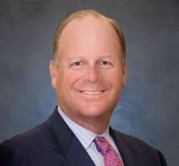20 percent beyond top performance

I recently finished reading Jason Redman’s book, The Trident. In it, Redman describes how he led a team of Navy SEALs in Iraq that got split up in an ambush by Al Qaida operatives. During the scuffle, Redman got shot in the face and in the left arm. He was naturally pretty messed up and, when he got back to the United States, he faced 30-plus surgeries.
Not surprisingly, he got a lot of visitors while in the hospital. But he didn’t like hearing those visitors talking in tones of pity. So he put a sign on his door that said:
‘‘Attention to all who enter here. If you are coming into this room with sorrow or to feel sorry for my wounds, go elsewhere. The wounds I received I got in a job I love, doing it for people I love, supporting the freedom of a country I deeply love. I am incredibly tough and will make a full recovery. What is full? That is the absolute utmost physically my body has the ability to recover. Then I will push that about 20 percent further through sheer mental tenacity. This room you are about to enter is a room of fun, optimism, and intense rapid regrowth. If you are not prepared for that, go elsewhere. The Management”
The “20 percent further” Redman put on his sign is part of Navy Seal training. Going 20 percent beyond max performance is how Navy SEALs define high performance. For example, if Navy SEALs go out on a run, their trainers will push them to run 20 percent farther than they thought they could go. If Navy SEALs do a scuba dive, they’ll be asked to do 20 percent more underwater than what they thought would be their limit. This approach to their training means they’re that much more ready to perform at the very highest level against an enemy.
While the work of Navy SEALs is profoundly different from the work of credit unions, reading this book really got me thinking about what would happen if credit unions started to think along the lines of giving 20 percent above and beyond the best in our work environments. It stands to reason that credit unions would become truly high-performing companies.
I like to think CUES is a great example of a team that regularly does more than its best. With just 44 employees, we put out a significant volume of quality products and programs—while at the same time striving to set the bar for member service.
We ask a lot of our “strategy managers” at CUES. When we tap mid-level managers to own a company-level initiative, we’re saying to them, “This is above and beyond your job description. We’re trying to get you exposed to a cross-functional, company-level effort that’s going to stretch you beyond what you were hired to do.” When we do that, there is recognition that this is a person we want to involve more. When staff members take on one of these assignments, they’re making a commitment to still get their main job done, as well as deliver on the corporate-level strategy.
Many credit unions are doing similar things. Most are doing more with less. They’ve made efficiency improvements, automated many processes, and found ways to connect with their members better.
Last August, a summer session CEO Institute I participant demonstrated what it means to reach. He let the class and professor know that he was going to be out for an hour one afternoon, talking with his credit union’s examiners. While his commitment to broadening his knowledge brought him to Wharton for the week-long institute, his commitment to responsibilities back in his shop didn’t go away. He reached for and achieved both.
At CUES we know a commitment to ongoing learning is also a commitment to stretching. So our programs are designed to make the stretch pay off. When CUES program attendees return to the office, they should be positioned to not just do their main job function, but have a broader perspective because of the learning they’ve done.
To help more credit union leaders stretch past 100 percent, we’ve launched CUES Elite Access in partnership with Cornell University. This year’s three CUES Elite Access courses (Strategic HR Leadership, Leadership Brand and Shadow, and Women Who Lead) all start in May. They comprise Ivy League-quality education you can access from your desk—or your child’s soccer field. Participants in the program could literally walk out of a meeting with examiners and across the hall into their next learning session.
With reaching beyond 100 percent so paramount, we’ve also launched CUES School of High Performance. Slated for late April in Chicago, the program will take a look at the specific attributes of high performing credit unions, how high performance is measured, the bottom-line impact of high performance, and what we can learn from high performers.
You don’t get to the top without stretching a little these days. And the need for reaching beyond 100 percent performance isn’t going away. I urge you to do as Redman wrote in my copy of The Trident, the image at the top of this article: “Overcome.” You can stretch successfully. And, remember, CUES is here to help you do it.


